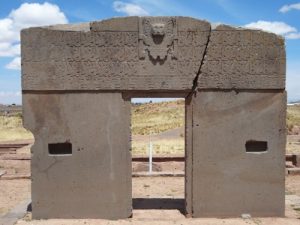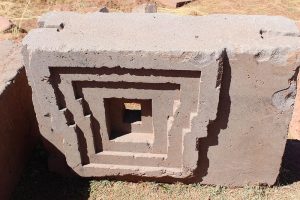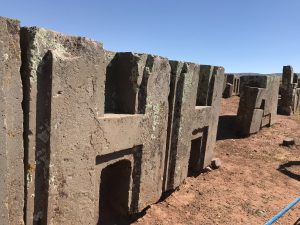Puma Punku Andean Megaliths: Precision Stonework of Tiwanaku
Puma Punku Andean megaliths, part of the larger Tiwanaku complex in Bolivia, are among the most remarkable examples of precision stone construction in ancient South America. These megalithic structures, dating back over 1,500 years, showcase finely cut stones, H-shaped blocks, and interlocking systems that continue to puzzle modern engineers and archaeologists.
The scale and accuracy of Puma Punku Andean megaliths are astonishing. Many stones weigh several tons, yet they were cut and assembled without mortar. Some blocks fit together so perfectly that even a knife blade cannot slide between them. The precision of the stone joints, angles, and placement suggests advanced knowledge of geometry and engineering, possibly influenced by the Andean culture’s understanding of sacred patterns and cosmic alignments.

Deliberate Design and Astronomical Alignment
Archaeologists studying Puma Punku Andean megaliths have noted alignments with the cardinal points and solar events. Some researchers propose that the site’s layout reflects astronomical cycles, connecting the construction to timekeeping, rituals, or spiritual purposes. These alignments hint at a sophisticated Neolithic culture that encoded astronomical knowledge directly into their architecture.
The Mystery of the H-Blocks
One of the most enigmatic aspects of Puma Punku Andean megaliths is the use of H-shaped stones. These massive blocks were precisely carved to interlock, possibly serving as structural supports or ceremonial platforms. The sheer complexity of their cutting and assembly raises questions about the tools and techniques available to the builders.

Cultural and Historical Significance
Puma Punku Andean megaliths demonstrate a highly organized society with advanced engineering skills. The site’s relationship with Tiwanaku suggests that it may have been part of a larger sacred or administrative complex, serving both ritualistic and societal functions.
It is possible that both Puma Punku and Tiwanaku might have been likely ceremonial centers, integral to the religious and social life of the Tiwanaku civilization (c. 500–1000 CE). Some scholars propose that astronomical alignments and sacred geometry were incorporated into the layout to mark solstices and equinoxes, connecting the structures to cosmology and spiritual practices.
Mysteries and Theories
How ancient people transported, shaped, and assembled such enormous stones remains a mystery. Theories range from advanced prehistoric engineering techniques to lost technologies. Some researchers suggest the precision may indicate a shared knowledge of geometry and astronomy across Andean cultures.
Legacy of Andean Megaliths
Puma Punku and Tiwanaku continue to inspire architects, archaeologists, and spiritual seekers alike. Their monumental stonework reflects not only the skill of ancient builders but also the sacred vision that guided Andean megalith construction.

Additional reading:





